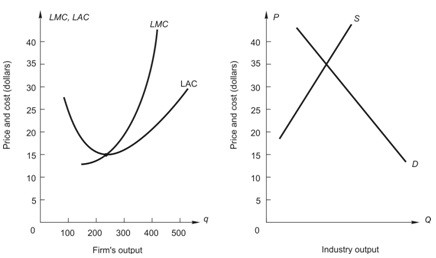Which of the following is true?
a. if minority and white employees in a skill category are equally productive, the profit motive provides employers with a strong incentive to hire minority employees if they are available at a lower wage.
b. the empirical evidence indicates that the earnings gap between whites and blacks is entirely the result of worker preference.
c. employers who discriminate against blacks and other minorities will have lower costs than rival firms that hire employees strictly on the basis of productivity.
d. after adjusting for factors such as education, experience, and location, the earnings of black men are almost identical to the earnings of white men.
a. if minority and white employees in a skill category are equally productive, the profit motive provides employers with a strong incentive to hire minority employees if they are available at a lower wage.
You might also like to view...
COLA clauses are usually based on the
a. CPI. b. PPI. c. implicit price deflators. d. level of unemployment.
Absolute advantage is determined by comparing the opportunity costs of producing each good in different countries
a. True b. False Indicate whether the statement is true or false
Below, the graph on the left shows long-run average and marginal cost for a typical firm in a perfectly competitive industry. The graph on the right shows demand and long-run supply for an increasing-cost industry. How much profit will the firm earn?
How much profit will the firm earn?
A. $3,100 B. $2,600 C. $3,750 D. $6,000 E. zero
In the long run, if inflation is higher in India than in the U.S., one would expect
A. the dollar to depreciate relative to the rupee B. the rupee to depreciate relative to the dollar C. the rupee to appreciate relative to the dollar D. two of the above are correct